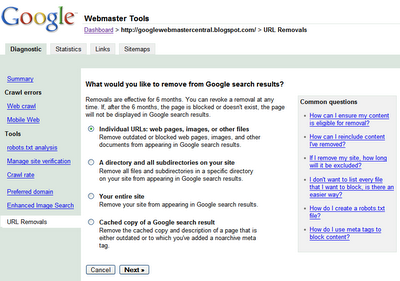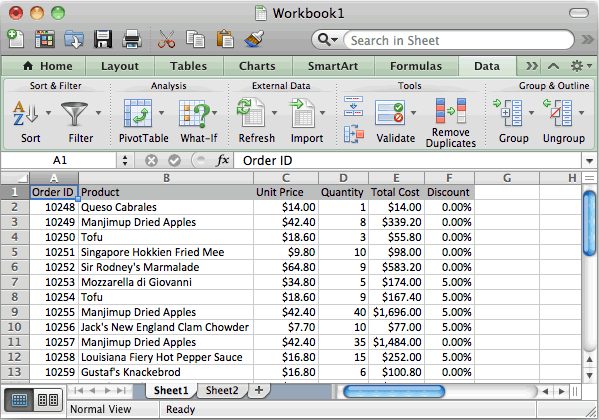Find out how to get Add-ins for Excel 2016 for Mac and Word 2016 for Mac. Skip to main content. Microsoft Support. Microsoft 365. Microsoft Support. Office for Mac doesn't currently support organization-based add-ins. Get a VBA add-in for Word or Excel for Mac. Office 365 是一项基于云的订阅服务,汇集了当今人们工作中使用的优秀工具。通过将 Excel 和 Outlook 等一流应用与 OneDrive 和 Microsoft Teams 等强大的云服务相结合,Office 365 可让任何人使用任何设备随时随地创建和共享内容。. Tech support scams are an industry-wide issue where scammers trick you into paying for unnecessary technical support services. You can help protect yourself from scammers by verifying that the contact is a Microsoft Agent or Microsoft Employee and that the phone number is an official Microsoft global customer service number.
Some of the content in this topic may not be applicable to some languages.
The file formats that are listed in the Save As dialog box vary, depending on what type of sheet is active. If you are saving your file into a different format, in most cases, Excel converts only the active sheet. To convert the other sheets in a workbook, switch to each sheet and save it separately.
File format | Description |
|---|---|
Excel Workbook (.xlsx) | The default, XML-based workbook format for Excel 2016 for Mac, Excel for Mac 2011, and Excel for Windows. Cannot store VBA macro code or Excel 4.0 macro sheets. |
Excel 97-2004 Workbook (.xls) | Compatible with Excel 98 through Excel 2004 for Mac and Excel 97 through Excel 2003 for Windows. Preserves VBA macro code and Excel 4.0 macro sheets. |
CSV UTF-8 (Comma delimited) (.csv) *Excel 2016 for Mac only | Exports the data on the active sheet to a text file that complies with UTF-8 Unicode encoding standards. Cell properties, formulas, graphics, and other formatting are not preserved. |
Excel Template (.xltx) | Saves the workbook as an XML-based template that you can use to start new workbooks. Saves settings such as formatting, headings, formulas, and custom toolbars. Cannot store VBA macro code or Excel 4.0 macro sheets. |
Excel 97-2004 Template (.xlt) | Saves the workbook as a template that you can use to start new workbooks. Compatible with Excel 98 through Excel 2004 for Mac and Excel 97 through Excel 2003 for Windows. Saves settings such as formatting, headings, formulas, VBA macros, and custom toolbars. VBA macros do not run in Excel 2008. |
Comma Separated Values (.csv) | Exports the data on the active sheet to a text file that uses commas to separate values in cells. Cell properties, formulas, graphics, and other formatting are not preserved. |
Web Page (.htm) | Saves the workbook for display on the web. HTML is the default web format and can be displayed by Macintosh and Windows browsers. |
Exports the selected cells, the active sheet, or all sheets in the workbook to PDF files, which look the same on Macintosh and Windows computers. | |
OpenDocument Spreadsheet (.ods) *Excel 2016 for Mac only | Saves the workbook in the XML-based OpenDocument format. |
Excel Binary Workbook (.xlsb) | Stores data in binary format. Takes less time to save, and helps keep sensitive data more secure. Preserves VBA macro code and Excel 4.0 macro sheets. |
Excel Macro-Enabled Workbook (.xlsm) | The XML-based workbook format for Excel 2016 for Mac, Excel for Mac 2011, and Excel for Windows that preserves VBA macro code and Excel 4.0 macro sheets. |
Excel Macro-Enabled Template (.xltm) | Saves the workbook as an XML-based template that preserves VBA macro code and Excel 4.0 macro sheets. |
Excel 2004 XML Spreadsheet (.xml) | Exports workbook data to an XML file that uses the Excel 2004 XML Spreadsheet schema. Number precision, graphics, and other formatting are not preserved. |
Excel AddIn (.xlam) | Saves the active sheet as an XML-based add-in, a supplemental program that runs additional code. Preserves VBA macro code and Excel 4.0 macro sheets. |
Excel 97-2004 AddIn (.xla) | Saves the active sheet as an add-in, a supplemental program that runs additional code. Compatible with Excel 98 through Excel 2004 for Mac and Excel 97 through Excel 2003 for Windows. Preserves VBA macro code and Excel 4.0 macro sheets. |
Single File Web Page (.mht) | Saves the workbook for display on the web by creating a single file that includes all page elements. Uses the MIME HTML Internet standard. |
UTF-16 Unicode Text (.txt) | Exports the data on the active sheet to a text file that complies with UTF-16 Unicode encoding standards. Cell properties, formulas, graphics, and other formatting are not preserved. |
Tab Delimited Text (.txt) | Exports the data on the active sheet to a text file that uses tabs to separate values in cells. Cell properties, formulas, graphics, and other formatting are not preserved. |
Windows Formatted Text (.txt) | Exports the data on the active sheet to a Windows-compatible text file that uses tabs to separate values in cells. Cell properties, formulas, graphics, and other formatting are not preserved. |
MS-DOS Formatted Text (.txt) | Exports the data on the active sheet to an MS-DOS compatible text file that uses tabs to separate values in cells. Cell properties, formulas, graphics, and other formatting are not preserved. |
Windows Comma Separated (.csv) | Exports the data on the active sheet to a Windows-compatible text file that uses commas to separate values in cells. Cell properties, formulas, graphics, and other formatting are not preserved. |
MS-DOS Comma Separated (.csv) | Exports the data on the active sheet to an MS-DOS-compatible text file that uses commas to separate values in cells. Cell properties, formulas, graphics, and other formatting are not preserved. |
Space Delimited Text (.prn) | Exports the data on the active sheet to a text file that uses spaces to separate values in cells. Cell properties, formulas, graphics, and other formatting are not preserved. |
Data Interchange Format (.dif) | Exports the data on the active sheet to a text file that can be used to exchange data with other spreadsheet applications. Cell properties, formulas, graphics, and other formatting are not preserved. |
Symbolic Link (.slk) | Exports the data on the active sheet to a text file that is compatible with Multiplan and other spreadsheet applications. Cell properties, formulas, graphics, and other formatting are not preserved. |
Excel 5.0/95 Workbook (.xls) | The workbook format that is compatible with Excel 5.0 for Mac and Excel 95 for Windows. Preserves VBA macro code and Excel 4.0 macro sheets. |
Whether it's #VALUE!, #NAME! or a problem with VLOOKUP, the following information can help you correct your error.
VLOOKUP
If you're getting errors or unexpected results with VLOOKUP, download the VLOOKUP troubleshooting tips quick reference.
#VALUE! error
The source of this problem is usually related to having a mix of numeric values and text values. For more information, see Correct a #VALUE! error.
#NAME? error
Make sure you type names correctly, enclose any text in quotation marks, or enclose sheet names in single quotation marks ('). For other causes and solutions, see #NAME? error.
#NUM! error
This can happen if you typed extra characters in a formula. For example, don't type $1,000 in a formula. Instead, enter 1000. For other causes and solutions, see Correct a #NUM! error.
#N/A error

If a formula can’t find a referenced value, it returns the #N/A error. For more information, see Correct a #N/A error.
#REF! error
Excel shows this error when a formula contains a cell reference that isn’t valid. For more information, see Correct a #REF! error.
#DIV/0! error
This happens when a number is divided by zero (0), or when a formula refers to a cell that has 0 or is blank. For more information, see #DIV/0! error.
Referencing other sheets and workbooks

If you are referencing another worksheet name, type ! after the name, and then type a cell or range. If the sheet name has spaces, enclose the name in single quotation marks. For example: =SUM('Sales Report'!A1:A8).
When referencing another external workbook:
Enclose the workbook name in square brackets [ ].
Type the full path to the file.
Enclose the path in single quotation marks (at the beginning of the path and after the name of the worksheet, before the exclamation point).
Example: =SUM('/Users/yourname/Desktop/[Q2 Operations.xlsx]Sales'!A1:A8)
Other quick solutions that might help
Microsoft Support Excel 2009 Mac Pro
Start every formula with an equal sign (=). Example: =SUM(A1:A8)
Use the * symbol to multiply numbers, not an X. Example: =A1*A8
Match all opening and closing parentheses so that they are in pairs. This example has 2 pairs: =IF(40>50,SUM(G2:G5),0)
Enter all required arguments. The Formula Builder can help you with this. Start typing a formula with a function name, and then press CONTROL + A to see the Formula Builder.
Use quotation marks around text in formulas. Example: =IF(A2>B2,'Over Budget','OK')
Change a referenced cell's data type. Press + 1, and then select Number.